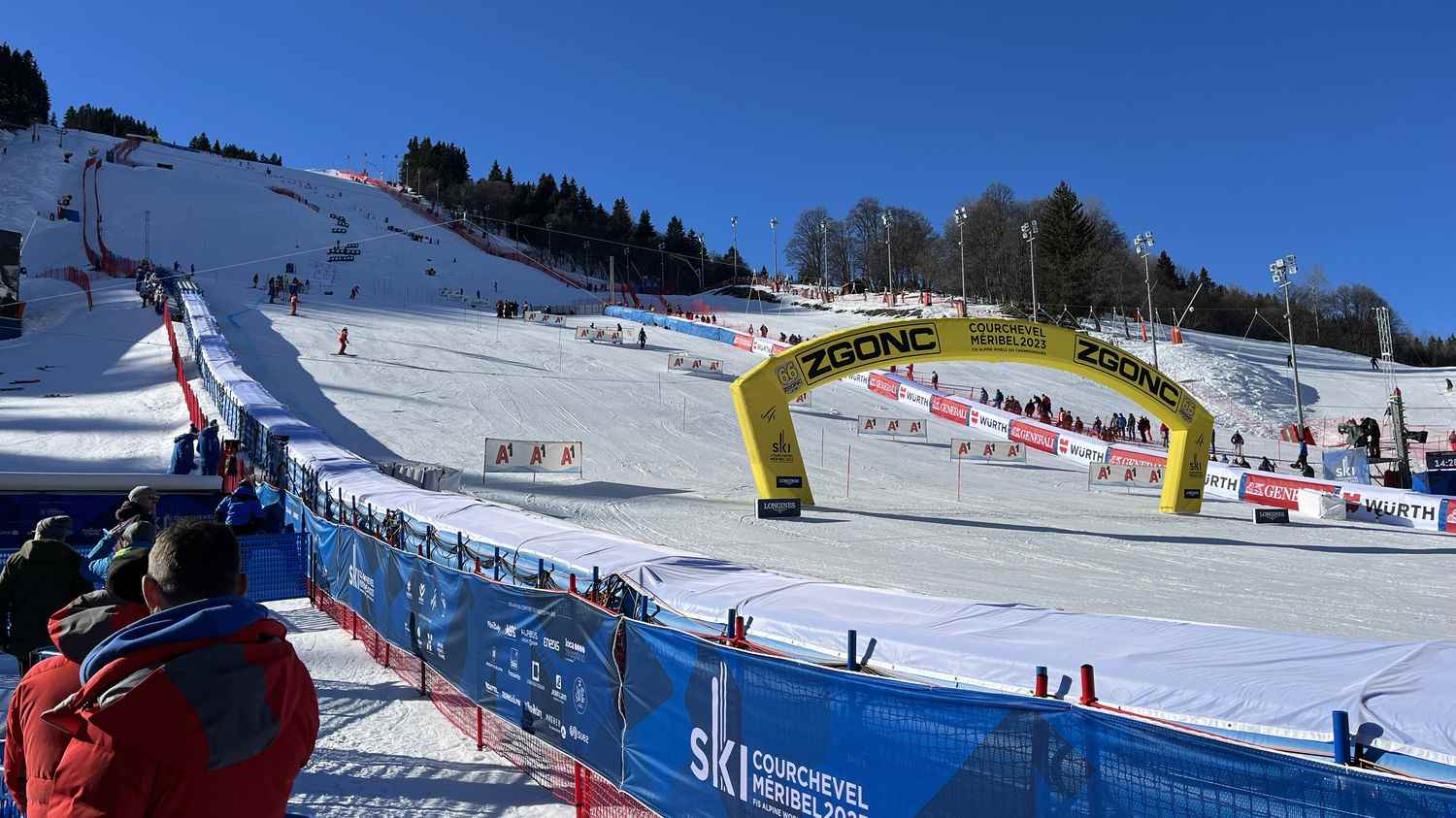In a few weeks, the tracks taken by tourists are transformed into the theater of the world championships in Courchevel and Méribel.
The Bellevarde face of Val d’Isère, the Signal de l’Alpe d’Huez, the Eclipse of Courchevel, the Roc de fer de Méribel… These track names may ring a bell. Blue, red or black for holidaymakers, they are also slopes officially approved by the International Ski Federation (FIS) to host circuit events.
While each track is unique, the FIS has implemented a precise homologation process. Difference in height of the slope, securing of the route, quality of its snow cover, nothing is left to chance. Franceinfo: sport explains how your favorite track becomes that of the biggest stars of the white circus.
What are the approved tracks?
In France, and as on the entire World Cup circuit, the approved competition tracks are open to everyone the rest of the time. For example, L’Eclipse was only closed to the general public on January 21, a little more than three weeks before the start of the Worlds, the time needed to bring the course up to FIS standards. And it will be accessible to everyone again less than five days after the last race of the championships, the men’s slalom (Sunday February 19).
Most often, these are difficult and particularly steep black runs, such as the Eclipse, while the Roc de Fer is categorized as blue. Some can accommodate all four alpine skiing events (slalom, giant, super-G and downhill) as in Courchevel and Méribel, while others are only suitable for technical or speed events.
But before becoming a FIS track, the process of approving a track takes about six months. Several major criteria are obviously scrutinized by an official inspector from the International Ski Federation, who visits the resort several times.
A homogeneous surface and precise unevenness
First, the coating has nothing to do with the one you are used to skiing. When you avoid icy slopes or sections as much as possible (the famous “tiles” in the jargon), professional skiers love it. Either way, they don’t really have a choice. Before each race, a little water is very often injected onto the track to “get a uniform coating everywhere” so that “it is safe for all athletes while respecting sporting fairness”, explains to franceinfo: sport Sébastien Santon, course designer at L’Eclipse.
The difference in altitude is also one of the essential conditions for differentiating a tourist track from a track dedicated to professionals, with differences between men and women. “According to the disciplines, there is a minimum and a maximum and there is a difference between women and men“, explains Sébastien Santon. When it takes, for example, between 800 and 1100 meters of elevation for a men’s downhill, it will take between 450 and 800 meters for the women’s event.
Drastic security standards
Safety issue, no risk is taken in view of the speed that can reach skiers in full effort. “We also have increasingly advanced safety standards, a bit like Formula 1continues the boss of L’Eclipse, and it is necessary to arrange spaces for the intermediate chronometers.“Several tens of kilometers of different nets are in fact installed all around the course to slow down the athlete as much as possible when he arrives at full speed following a fall.
“On the other hand, there are no obligations on the percentages of slope. And the athletes ski on a track built like a lambda track, on grass and pebbles. The difference is that we take better care of it.” adds Sébastien Santon.
The secrets of snow density
Finally the track designer assures us “that there is no minimum on the thickness of the snow” as long as we “does not happen on the grass obviously“. What matters, with the white coat of the slopes, is its density: “It is essential that it is exactly the same on the entire route. You can’t have snow that breaks. Depending on the temperatures, the snow is compacted with snow groomers, it is maintained in a certain way. Then, we have a nice density of snow.”
Concretely, you need at least 40 centimeters of snow before watering, and generally, as on the Eclipse, we aim for 70 centimeters, sufficient here to accommodate races for a fortnight and keep a certain margin. “If it snows and we send the groomers, we must not damage the way it is prepared there, warns Sébastien Santon , and if we don’t have too much leeway, we can go to disaster. So it’s good to have a little security.“When all these technical criteria are met and validated by the FIS, the track is approved for five years in speed (downhill and super-G), and for ten years in technique (slalom and giant slalom).
